Welcome to our latest gear list, updated to April 2020.
After three years and nine months on the road since we left Deadhorse, Alaska in June 2016 we have continually fine tuned our equipment, ditching items that at first we thought we could not do without for a long tour, while other items have become relied-upon favourites.
There have been quite a few changes to our camping equipment since our last list, most notably a lighter tent and sleeping bags, but the biggest change has been to our bikes.
From Cusco to Patagonia (9 months cycling) we have been riding the Otso Voytek which is a carbon fibre plus-fat bike. Super versatile, these bikes can run 26, 27.5 or 29 inch wheels, with a variety of tyre widths (up to 4.6 on 26 inch). We’ve been running them with 27.5 x 3 inch, which has been perfect for the type of terrain we like to ride, as well as coping well with sandy routes such as the Ruta de los Seis Miles.
The extra stiffness, lighter weight, tyre clearance and sportier handling have all been very beneficial for us and improved our riding experience, especially on technical trails. They are truely go-anywhere adventure bikes, especially when combined with the Salsa Kingpin Deluxe fork, which has two sets of cargo cage mounts. Watch out for a more detailed overview of these, and other equipment, soon.
Our overall ethos as far as equipment is concerned is to carry as little as we think we can get away with to meet basic comforts. Neither of us like being cold – especially while waiting to photograph sunrise – so we don’t skimp on warm jackets, but we do eschew apres-riding wear, bike parts for ‘what if’ situations and excess tools.
Our ‘kitchen’ is very basic, because what’s more important to us is being light and agile enough to have broad choices about where we ride, and not to just do remote hike-a-bikes and steep mountain roads, but to be able to enjoy them too.
After so much time on the road, we’ve been able to fine tune our clothing layering system so that it is as versatile as possible, while as light as possible for the expected conditions.
The list that follows is what we find to be comfortable for riding in alpine and high altitude desert conditions (down to -15c) typical of the Andes. That includes conditions ranging from cold & wet and very cold & relatively dry (Peru and Bolivia during dry season, as well as the Puna regions). Note that in both these regions highs in the low 20’s (celcius) are common during the day, even at 4000m, and the canyons can reach into the 30’s. This is the gear we used for the Andes through southern Peru, Bolivia, Chile and Argentina.
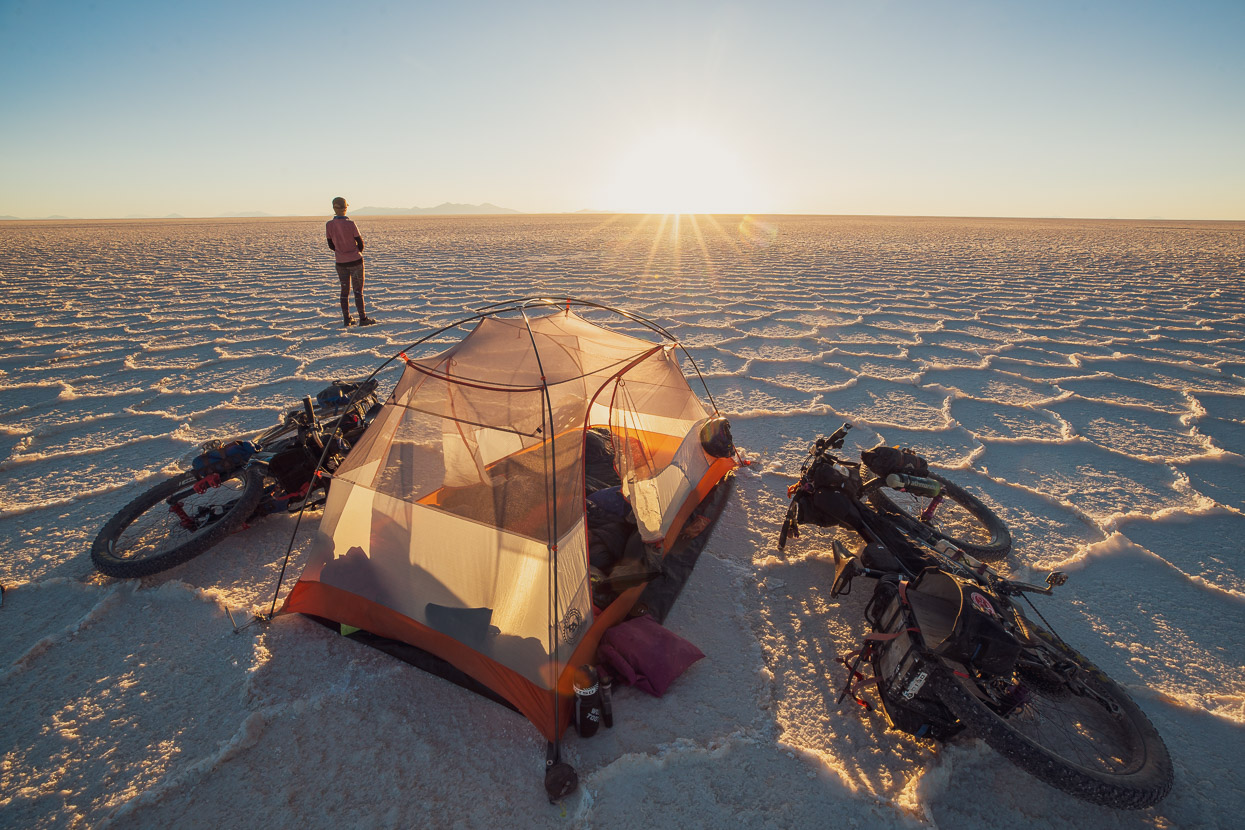
Some notes:
• We rode the mountains in Colombia, Ecuador and northern Peru (to Huaraz) with +5c Kathmandu Pathfinder sleeping bags, as we’d sent our winter bags down to Huaraz from Mexico, way back. Sometimes sleeping at elevations above 4000m we thought we’d freeze, but these bags were actually quite manageable as long as we slept in all our clothes (including down jackets at times), so if you want to save weight and bulk, consider this strategy through the ‘warmer’ countries. Only since Huaraz it has been consistently colder so we were happy to have warmer bags.
In June 2019 we then changed our winter bags (rated -10c) to a more broadly versatile Big Agnes Hitchens UL 20 (-7c) which has been perfect for Peru/Bolivia altiplano conditions and the puna, as long as you are prepared to wear socks, leggings and merinos in the bag during the coldest nights and sometimes even a down jacket if you are a cold sleeper. Doing this enabled us to get our pack weight even lower and save more space.
• Our switch from the MSR Hubba Hubba to the Big Agnes Copper Spur HV UL2 (bikepacking model) was well worthwhile. Things we prefer about the Copper Spur are: ShortStik poles which fold extra small, much greater stability in wind, better internal storage and weight & space savings. If you use this tent in dusty & windy conditions (such as the Chilean/Argentine Puna) you can expect lots of dust inside, and the zippers to have a shorter life (carrying spare sliders is essential).
• We strategically lighten up at times for extra difficult sections of riding (Baja Divide, parts of TEMBR/Tres Volcanes, Cordillera Huayhuash, Mama Coca) by sending stuff ahead with couriers. This is usually to a reliable location such as a pre-booked hostel or Warm Showers host.
• Some of the equipment featured on this list is from sponsors. But in every case, the items we use are specifically what we wanted, not what the sponsor wanted us to be carrying.
Read our Baja Divide gear list, and to see how Mark packs his bike, scroll right to the end of this post.
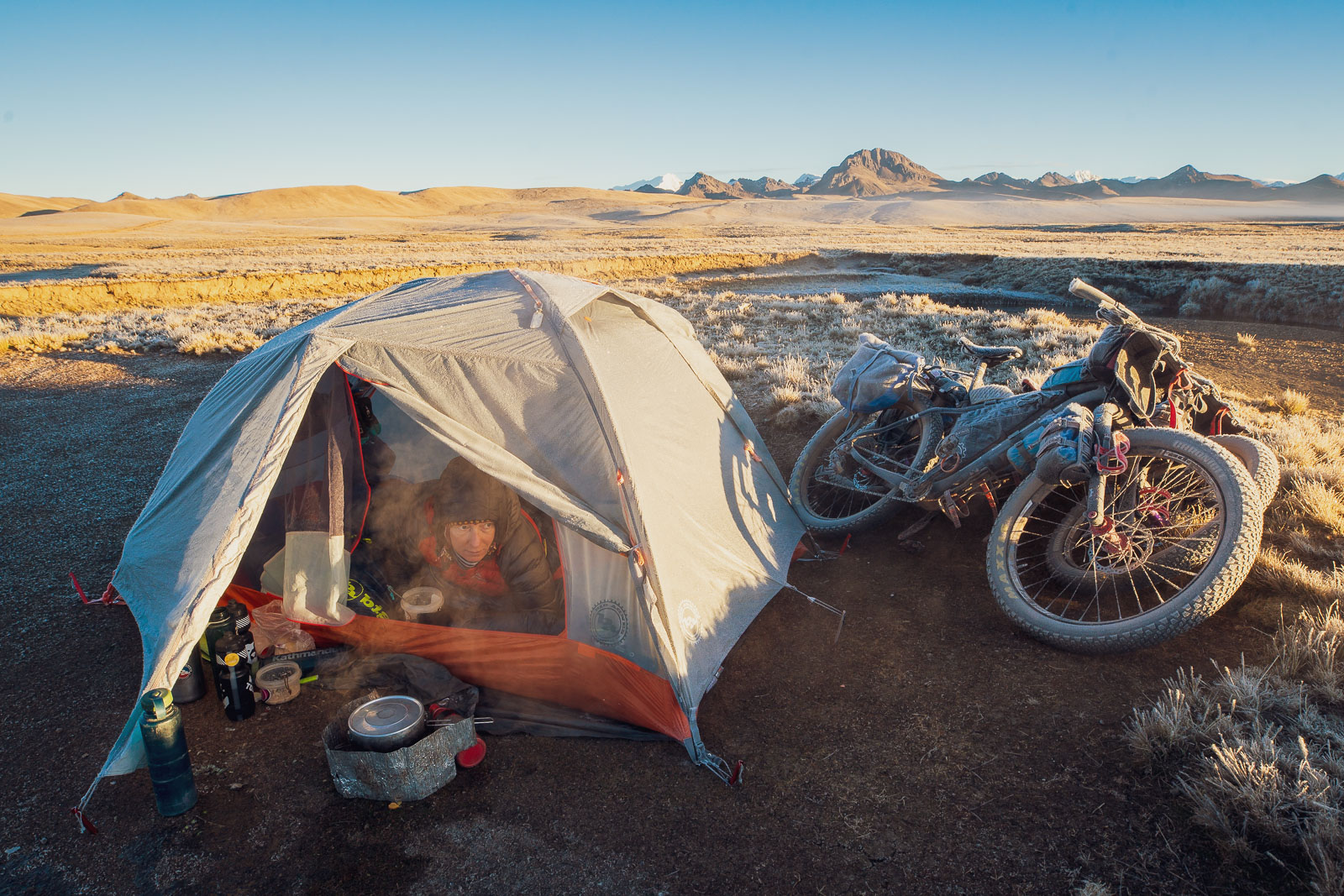
Body
• Singlet: Kathmandu driMotion Active
• T-shirt: Otso
• Short sleeve merino: Wolftooth Crew neck t-shirt
• Long sleeve merino (x2): Kathmandu Core Spun Merino Blend
• Lightweight windproof jacket: Kathmandu Lite Ace Pro 175gm
• Gore-Tex jacket: Kathmandu Aysen 420gm
• Kathmandu Lightweight Custom Down jacket 375gm (Has a hood – makes a big difference in cold wind etc)
• Big Agnes Shovelhead Hooded Down Jacket 496gm
Legs
• Underwear x1
• Shorts: Kuhl Renegade 12” shorts
• Padded cycling short liners x 1
• Long johns: Macpac powerstretch
• Knitted leg warmers, from Peru
• Rain pants: Kathmandu Trailhead (modified to ¾ length)
Head/Hands/Feet
• Short finger MTB gloves
• Long finger Wolftooth Flexor gloves
• Kathmandu Merino gloves
• Kathmandu Classic Insulated Snow Glove
• Handknitted Alpaca beanie, from Peru
• Wolftooth/Otso Socks x3 (2 for riding, 1 for sleeping)
• Merino headtube (so good for cold descents and breezy camps)
• Buff (for sun protection)
• Otso badge cap (for apres-bike wear and sun protection on climbs)
• Cycling cap (keeps the wind off the head on cold descents)
• Bike shoes: Shimano XM7 (best MTB adventure shoes I have ever had – now on my fourth pair)
• Ankle gaiters: Salomon Trail Gaiters (great for keeping sand/mud/dirt/snow out of shoes
• Flipflops
Tech
• Macbook Air 11” + Thule Sleeve
• Western Digital Hard drive 4TB x 1
• Power bank: Xiaomi 20,000 mAh (for Seis Miles also a 10,000)
• Sony In-ear headphones
• Phone: Samsung J7 Pro (used for navigation with OsmAnd+ app)
• Single USB wall plug + cable
• Spare cable for charging other USB devices
• Bluetooth speaker (Altec Lansing H20 Mini)
Accessories/Misc
• Helmet: Scott Vivo Plus (best helmet I have ever had)
• Sunglasses x2 Sungod – Pacebreaker and Classic
• Backpack: ultralight 15l Tatoo
• Homemade Gore-Tex saddle cover
• Revelate Designs wallet
• Passport
• Headtorch: Kathmandu Raven 200
• Biomaxa Pro-ride Chamois Cream
• Various drybags
• Water bottles: 700ml x1, 1.0l x2, 1.2l Kleen Kanteen Stainless
• Water bladder: 2.0 litre Platypus x2
• Homemade light nylon food bag
• Small rear light
Sleeping/Camping
• Sleeping bag: Big Agnes Hitchins UL20, -7°c, 850 loft, 765gm (M)
• Kathmandu Polygiene/Silk sleeping bag liner
• Sleeping mat: Big Agnes AXL Air insulated, Mummy, 301g, 0°c
• 5mm silver insulated foam, 1m x 40cm (protecting tent floor/comfort sitting outside)
• Titanium spork
• Toiletries: cut down toothbrush, 25ml toothpaste, razor, soap scrap, sunscreen, lipbalm, medications
• Microtowel, small
Bikepacking Bags/Luggage
• Revelate Harness
• Revelate Salty Roll
• Revelate Egress pocket front bag
• Revelate Mountain Feedbag x2 (updated 1 litre version)
• Revelate Voytek bolt-on frame bag
• Revelate Mag-Tank 2000
• Revelate Jerry Can
• Revelate Prototype waterproof rolltop Rear Panniers
• Revelate Pole Cat cargo bags x2 for fork (prototype version)
• Revelate Joey downtube bag
• Wolftooth B-Rad mini roll-top bag
• Plasmo Bikepacking Custom Lens Bag (Handlebar)
Body
• Sport bra
• Bra
• T-shirt with cut-off sleeves
• Short sleeve merino x2: Kathmandu Divide scoop neck t-shirt
• Long sleeve cotton shirt for sun protection
• Long sleeve merino: Kathmandu Merino Pro test sample
• Long sleeve merino: Kathmandu Flinders Zip neck
• Lightweight windproof jacket: Kathmandu Lite Ace 175gm
• Gore-Tex jacket: Kathmandu Aysen 420gm
• Kathmandu Ultralight Down Pullover 325gm (one of my favourite bits of kit)
• Kathmandu Lightweight Custom Down jacket 375gm
Legs
• Underwear x 2
• Lycra leggings
• Icebreaker merino blend powerstretch tights
• Knitted leg warmers
• Kathmandu Praca hiking shorts
• Padded Bike shorts x 2: Ground Effect Sirens, Tinelli Core shorts
• Rain pants: Kathmandu Trailhead (modified to ¾ length)
Head/Hands/Feet
• Short finger MTB gloves
• Long finger Wolftooth Flexor gloves
• Kathmandu Merino gloves
• Kathmandu Classic Insulated Snow Glove
• Neck gaiter: Kathmandu Headtube
• Headband
• Otso beanie
• Wolftooth cap
• Wolftooth/Otso Socks x1 short, x2 merino blend, x1 warm merino sleep socks
• Bike shoes: Shimano XM7
• Ankle gaiters: Salomon Trail Gaiters (great for keeping sand/mud/dirt/snow out of shoes)
• Flipflops
Tech
• Camera: Canon G7X mkII, and 2x spare batteries
• Power plugs USB: straight pin, two pin, NZ/Argentina
• Power bank: Xiaomi 20000mAh
• Phone: Samsung S8
• In-ear headphones
• Hard drive 1TB
• Hard drive 4TB (Marks back-up)
Accessories/Misc
• Helmet Giro
• Sunglasses x 2 Sungod – Pacebreaker and Classic, and case
• Backpack: Sea to Summit Ultra-Sil daypack
• Homemade Gore-Tex saddle cover
• Small purse
• Passport
• Various Kathmandu drybags
• Biomaxa Pro-ride Chamois cream
• Headtorch: Kathmandu Raven 200
• Water bottle: 700ml x1, 1.0l x1, 1.5l x1
• Water bladder: 2.0 litre Platypus x2
• Homemade light nylon food bag
• Cycle speedometer: Cateye Micro wireless
• Rear light
Sleeping/Camping
• Sleeping bag: Big Agnes Hitchins UL20, -7°c, 850 loft, 710gm (S)
• Kathmandu Polygiene/Silk sleeping bag liner
• Sleeping mat: Big Agnes AXL Air insulated, Mummy, 301g, 0°c
• 5mm silver insulated foam, 1m x 40cm (for protecting sleeping mat, sitting outside)
• Spoon, plastic Sea to Summit
• Toiletries: sunblock, toothbrush, 25ml toothpaste, chapstick, earplugs, menstrual cup, pee cloth
• Microtowel mini
Bikepacking Bags/Luggage
• Revelate Harness
• Revelate Salty Roll
• Revelate Egress pocket front bag
• Revelate Mountain feedbag x2 (updated 1 litre version)
• Revelate Voytek bolt-on frame bag
• Revelate Mag-Tank 2000
• Revelate Jerry Can
• Revelate prototype ‘bucket’ panniers
• Revelate Pole Cat cargo bags X2 for fork
• Revelate Joey downtube bag
• Wolftooth B-Rad mini roll-top bag
Mark’s Photography Kit
Read a blog post about Mark’s equipment choices here.
• Sony A7RII Camera body
• Metabones Sony/Canon lens adapter
• Canon 16-35mm f2.8L MkIII
• Canon 50mm f1.2L
• Canon 70-200mm f4L IS
• Electronic cable release
• Cleaning kit (Lenspen, microfibre cloth, lens fluid, sensor cleaning swabs + fluid)
• 7 spare batteries
• 128 GB SanDisk SD card (x2)
• 64 GB SanDisk SD card (x1)
• 32 GB SanDisk SD card (x1)
• Thinktank Skin 50 lens case
• Thinktank Lenschanger lens case
• Lee filter holder
• Circular polariser
• 3-stop ND filter
• Sirui T-024X carbon fibre tripod + ball head
• Thinktank Turnstyle 5 sling bag for carrying camera (brilliant as it can be worn as sling or bumbag)
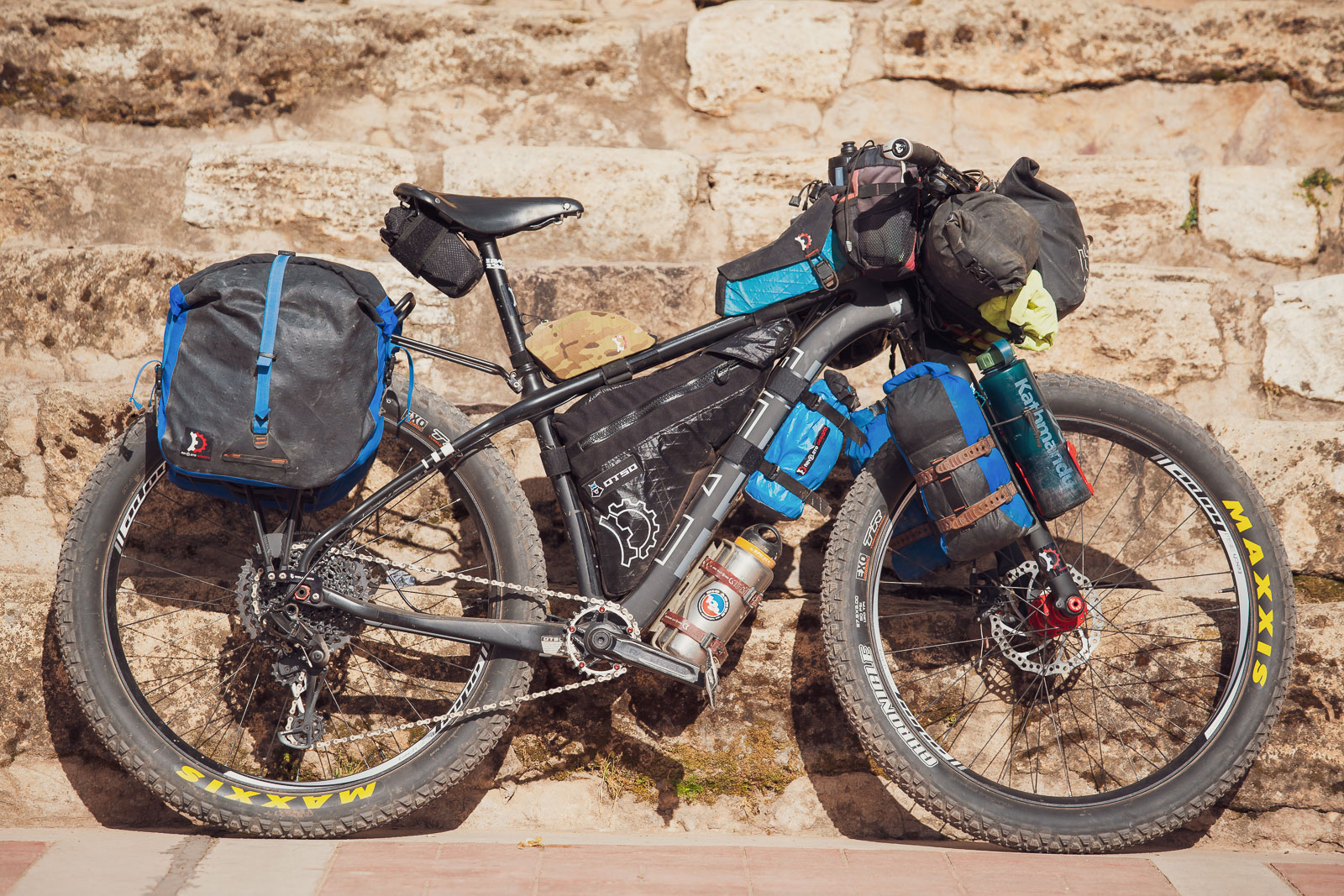
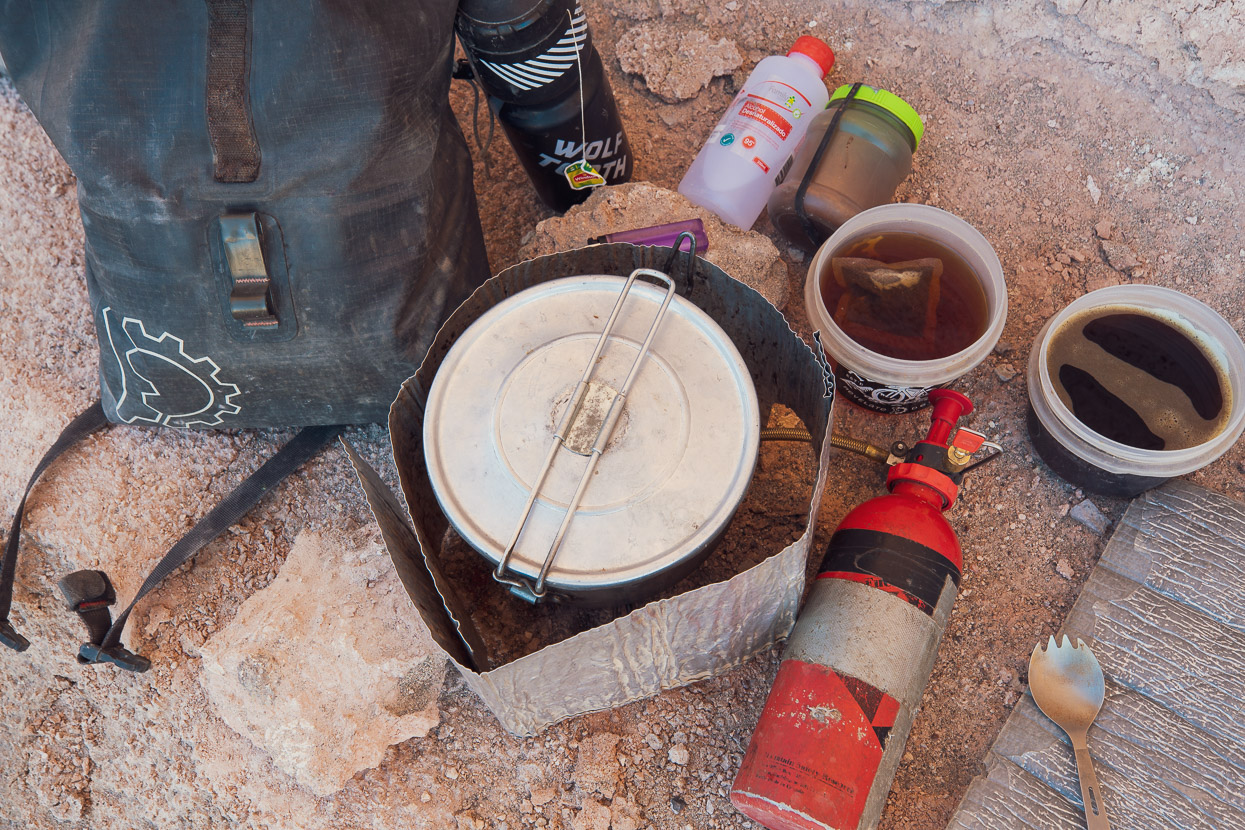
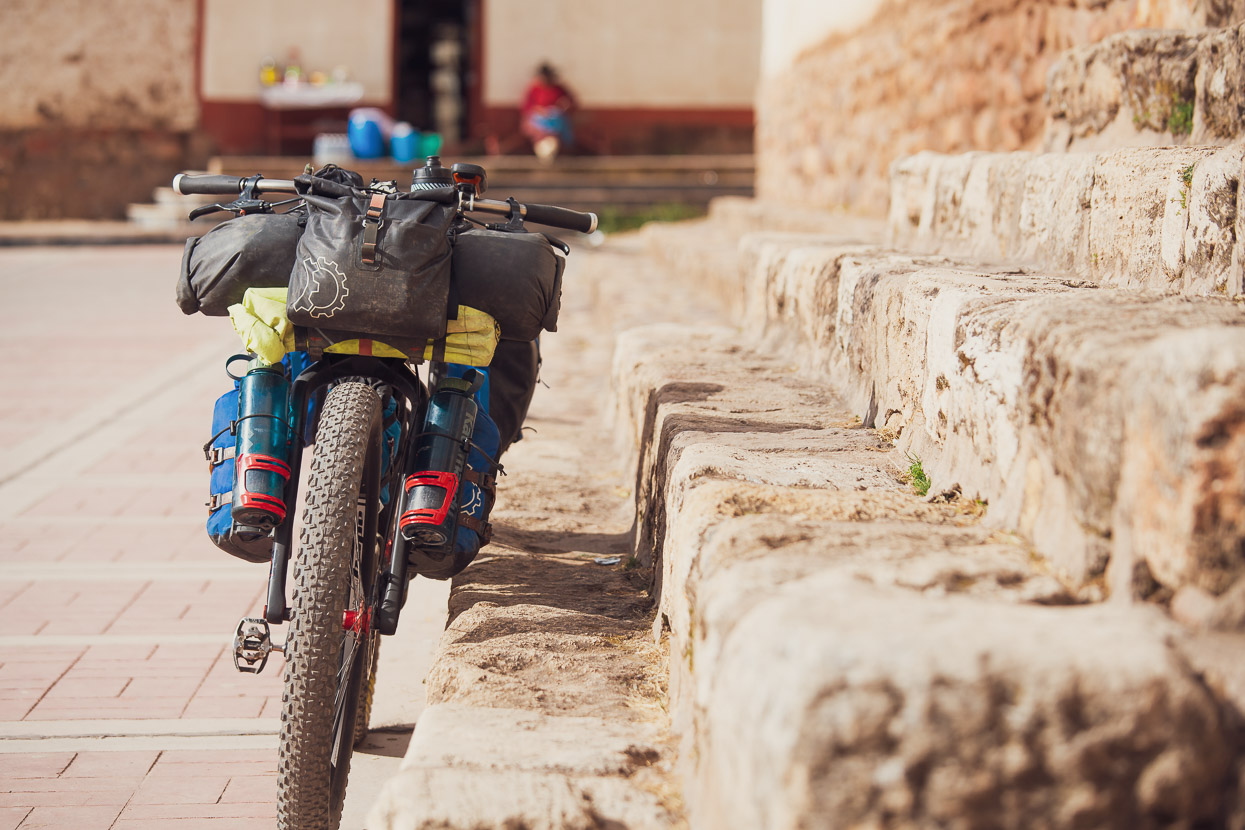
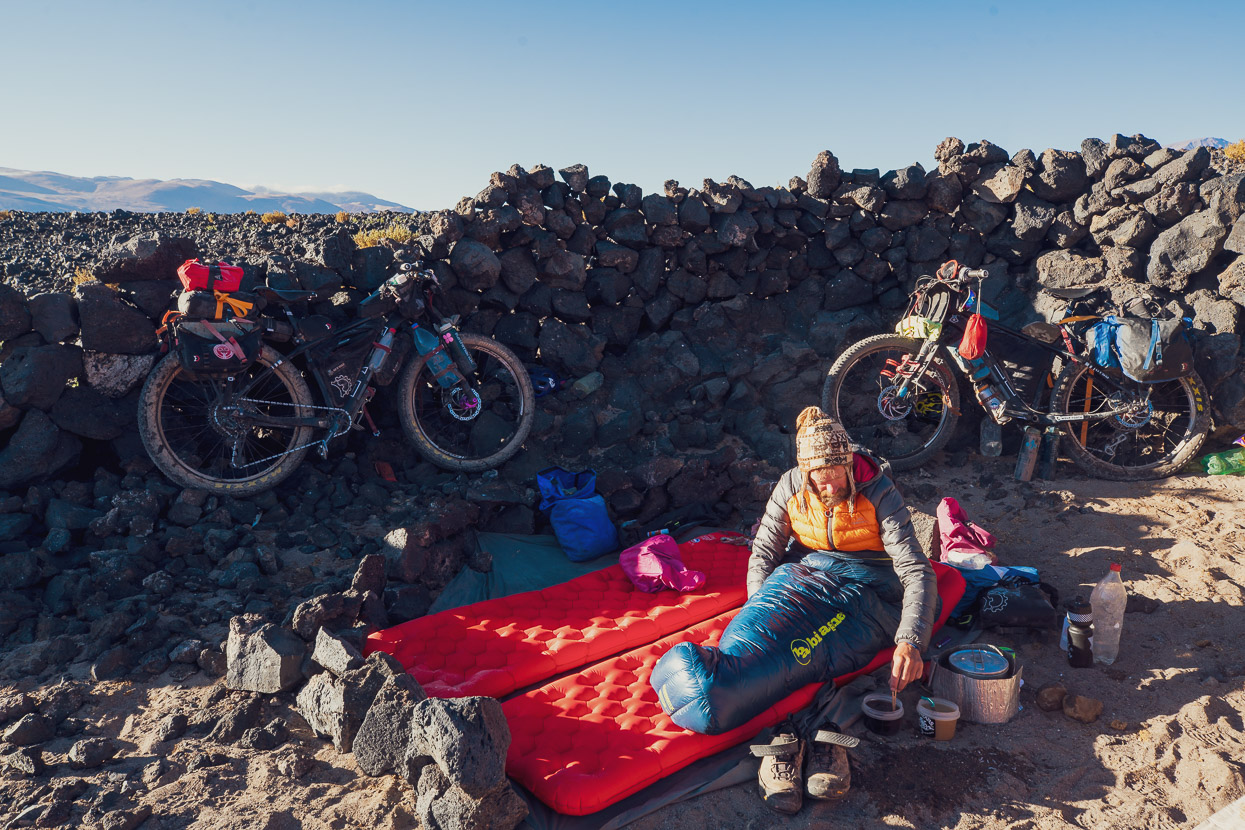
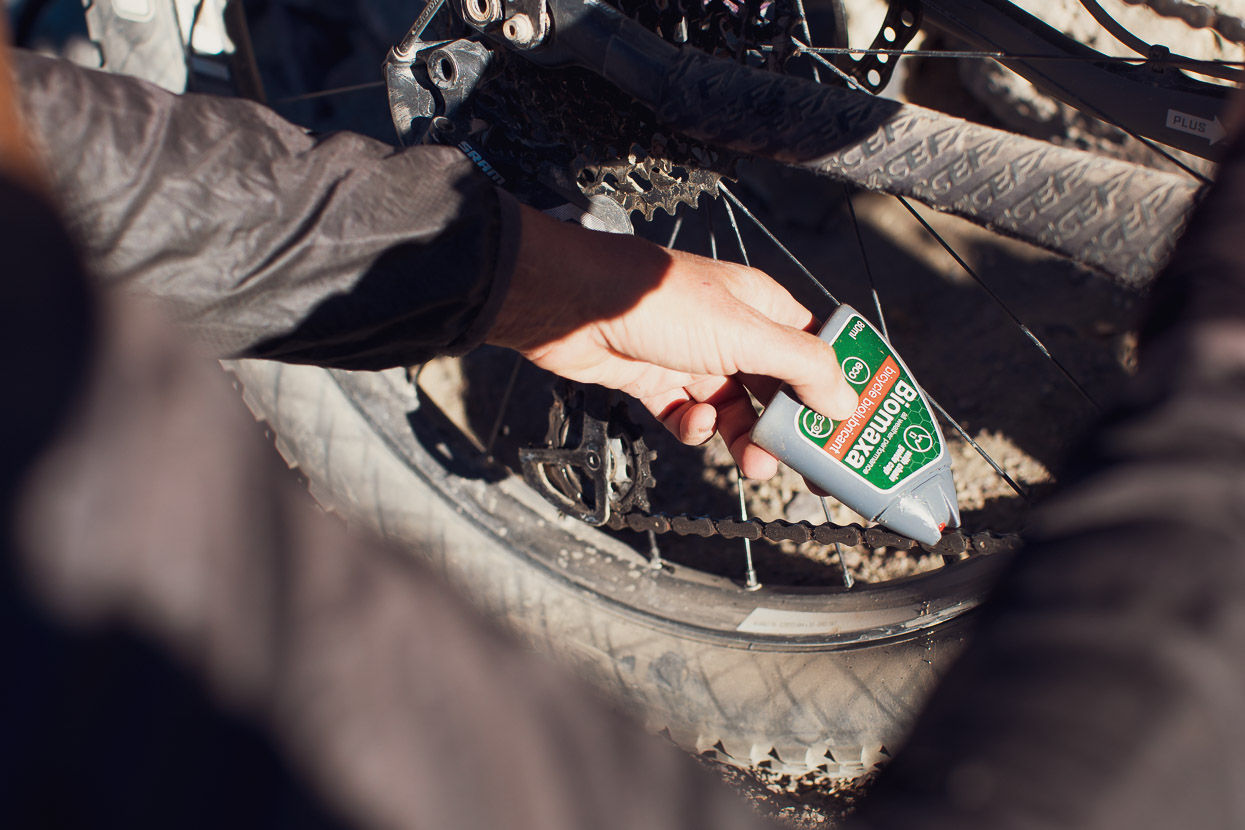
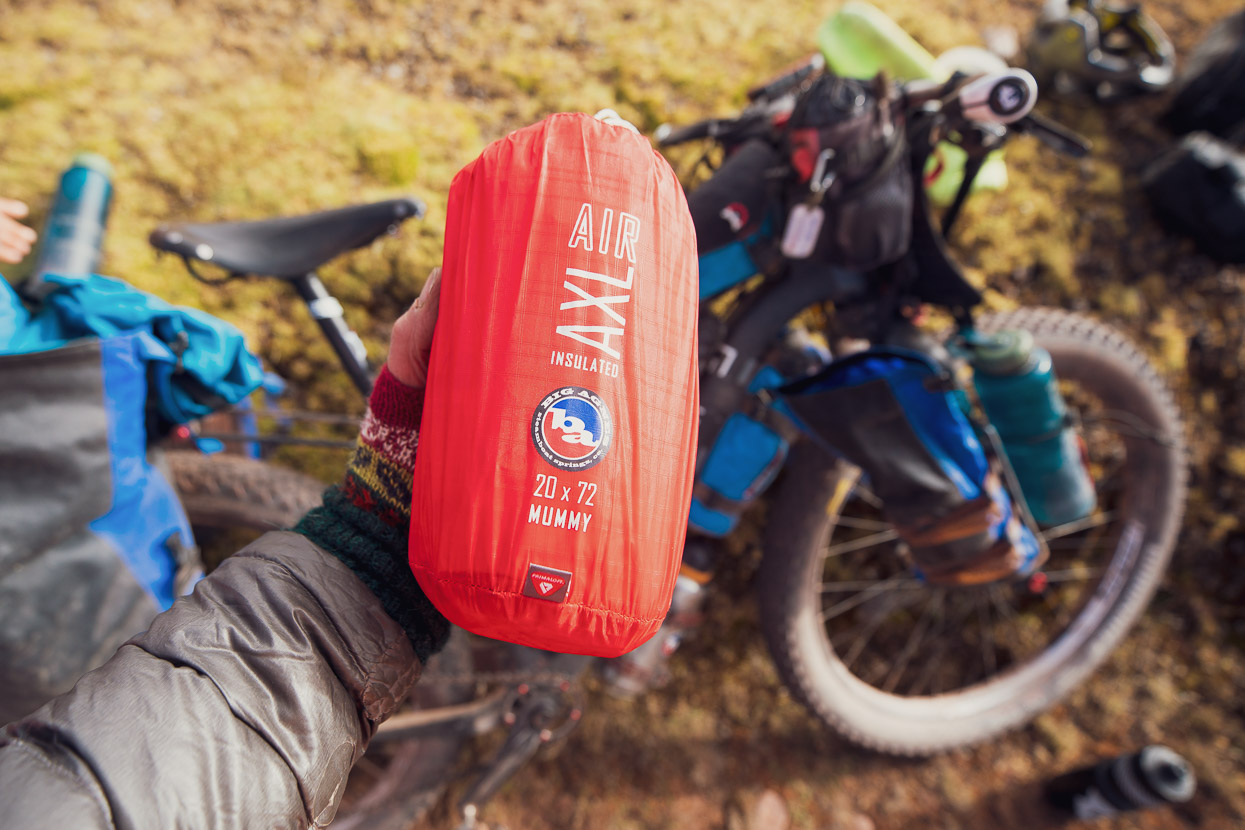
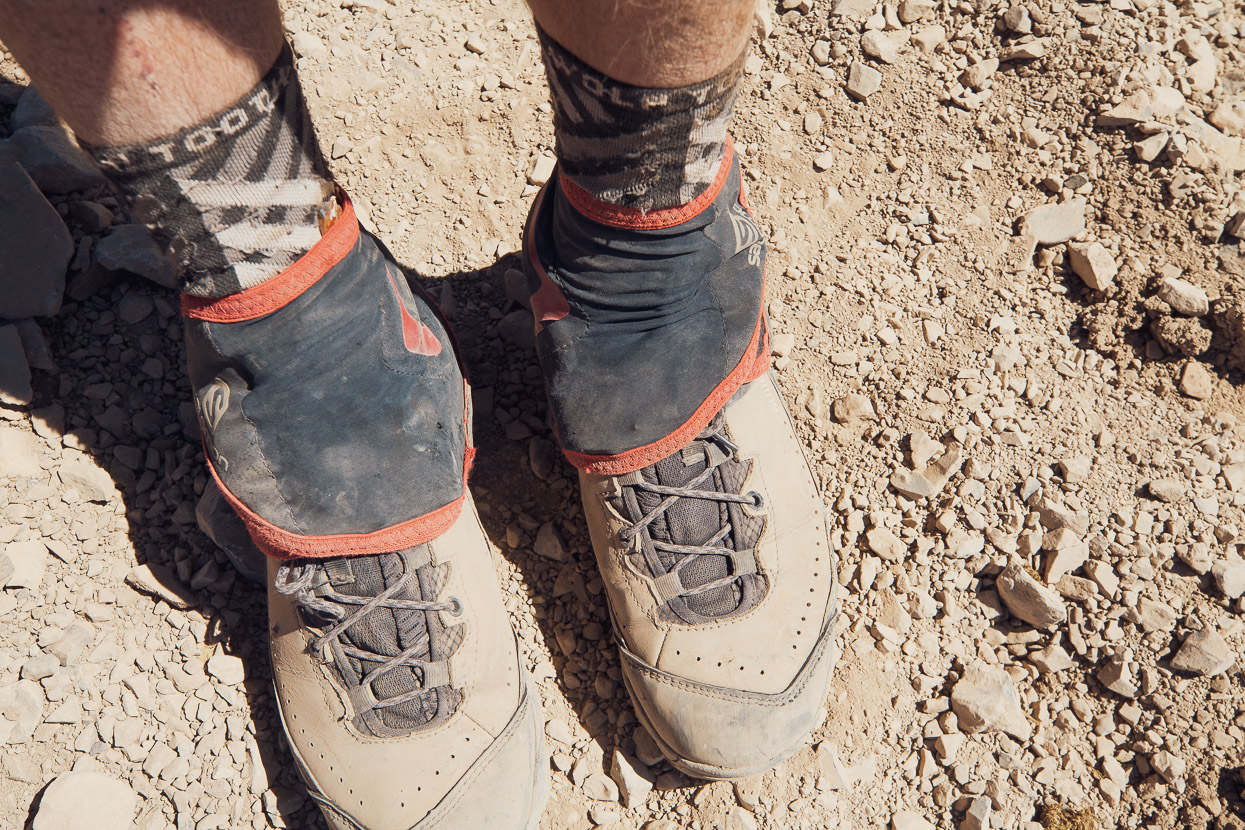
Do you enjoy our blog content? Find it useful?
Creating content for this site – as much as we love it – adds to travel costs. Every small donation helps, and your contributions motivate us to work on more bicycle travel-related content.
Thanks to Otso Cycles, Big Agnes, Revelate Designs, Kathmandu, Hope Technology, Biomaxa and Pureflow.

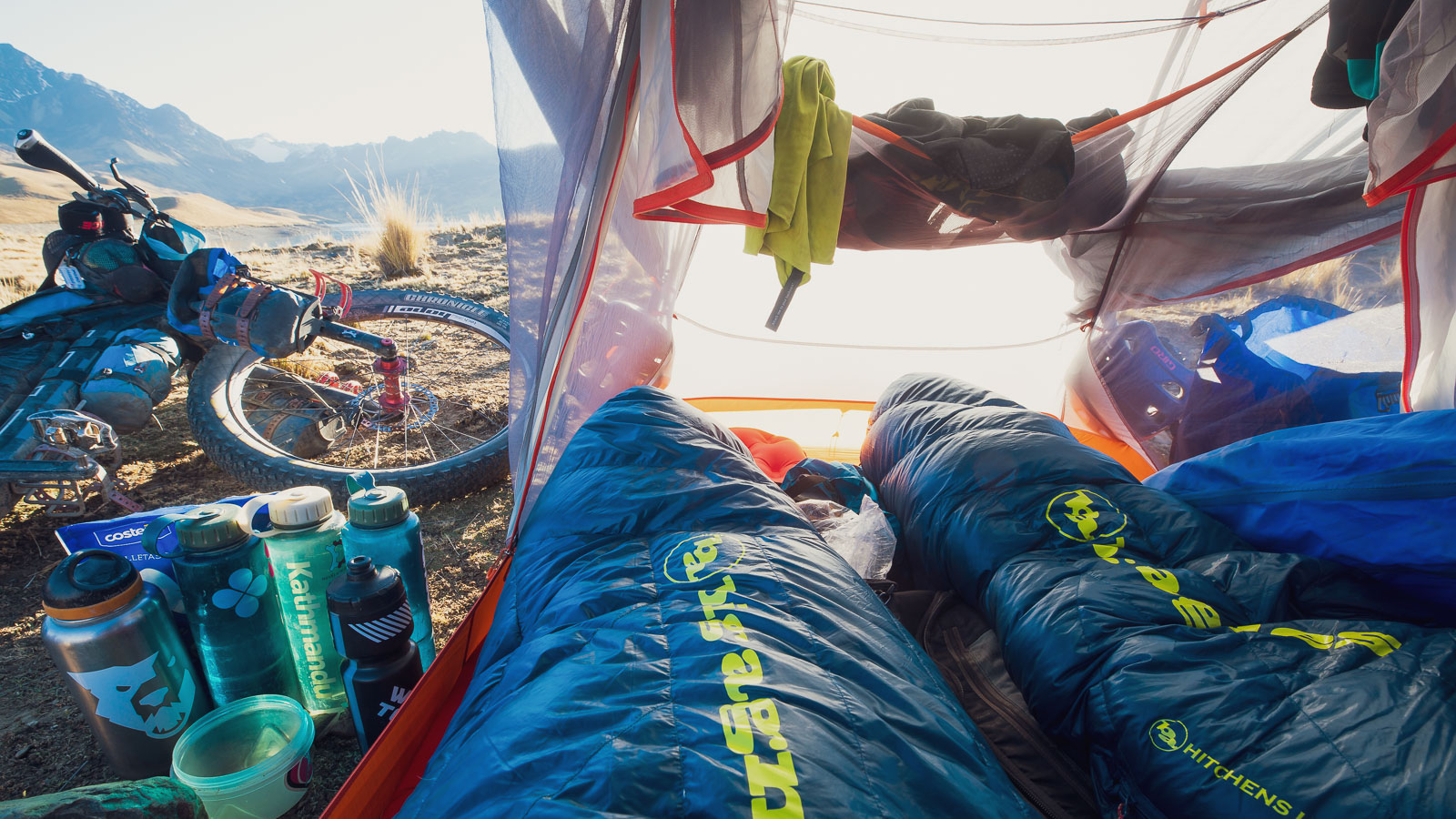
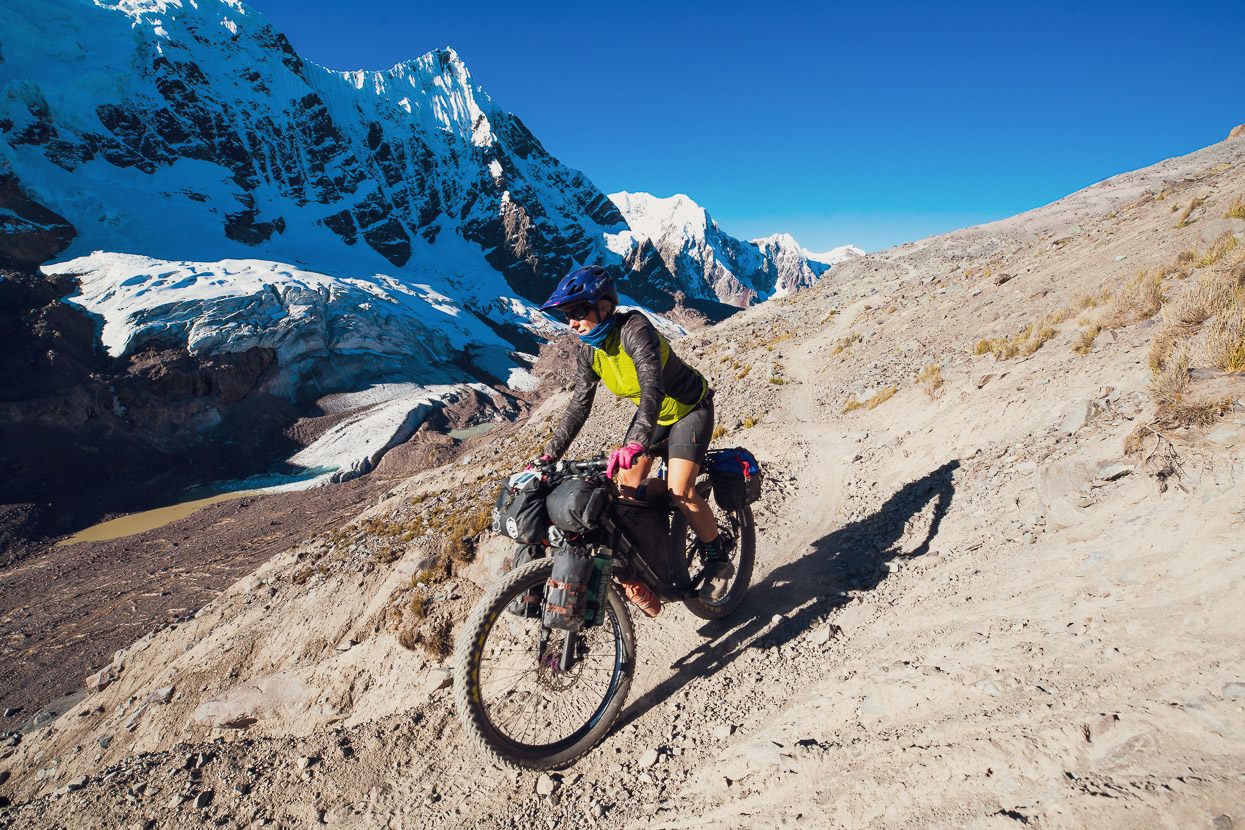
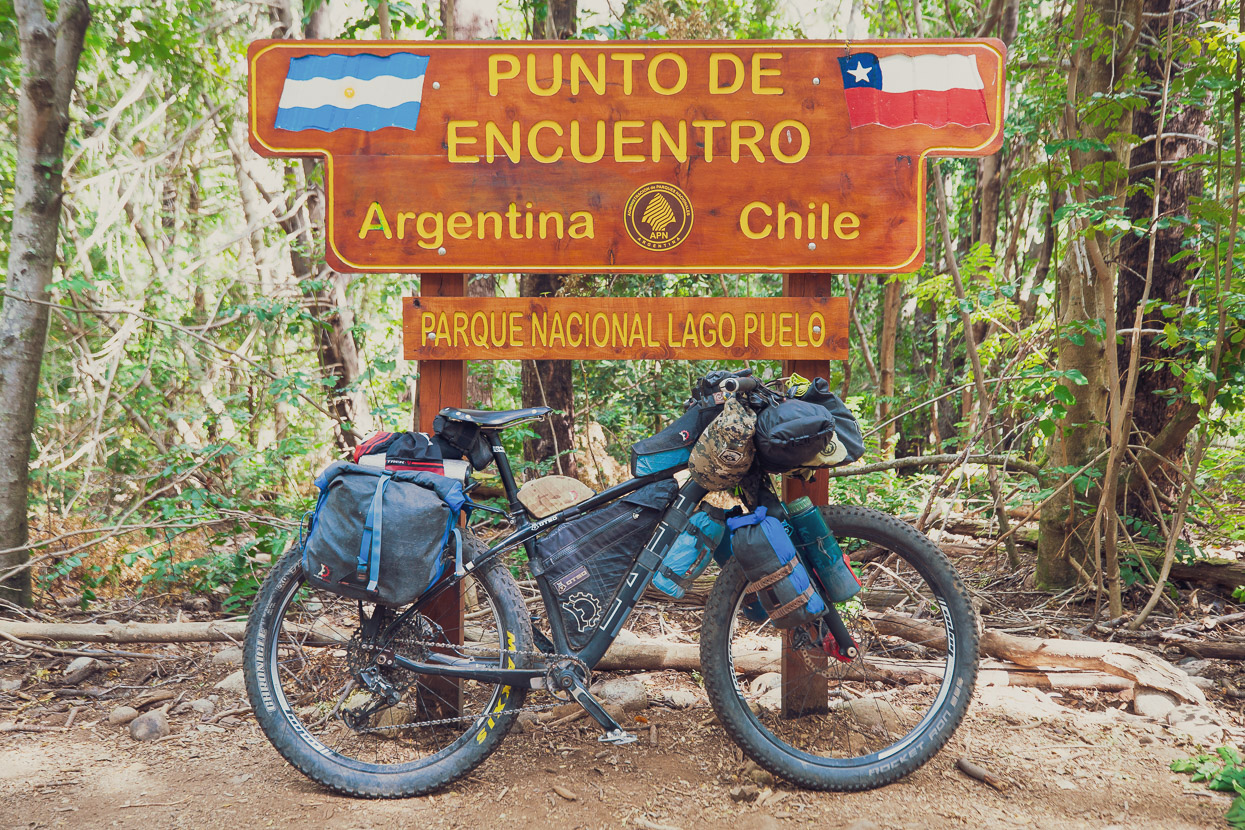
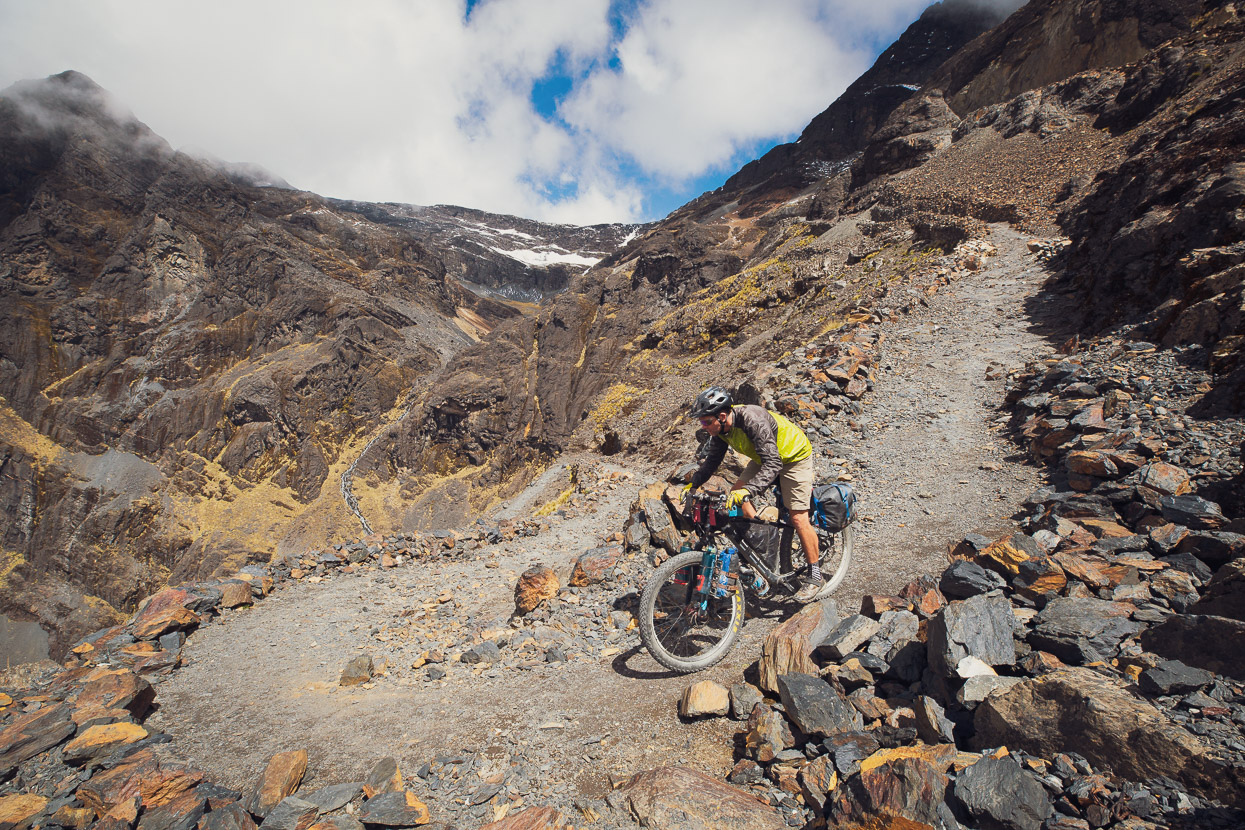
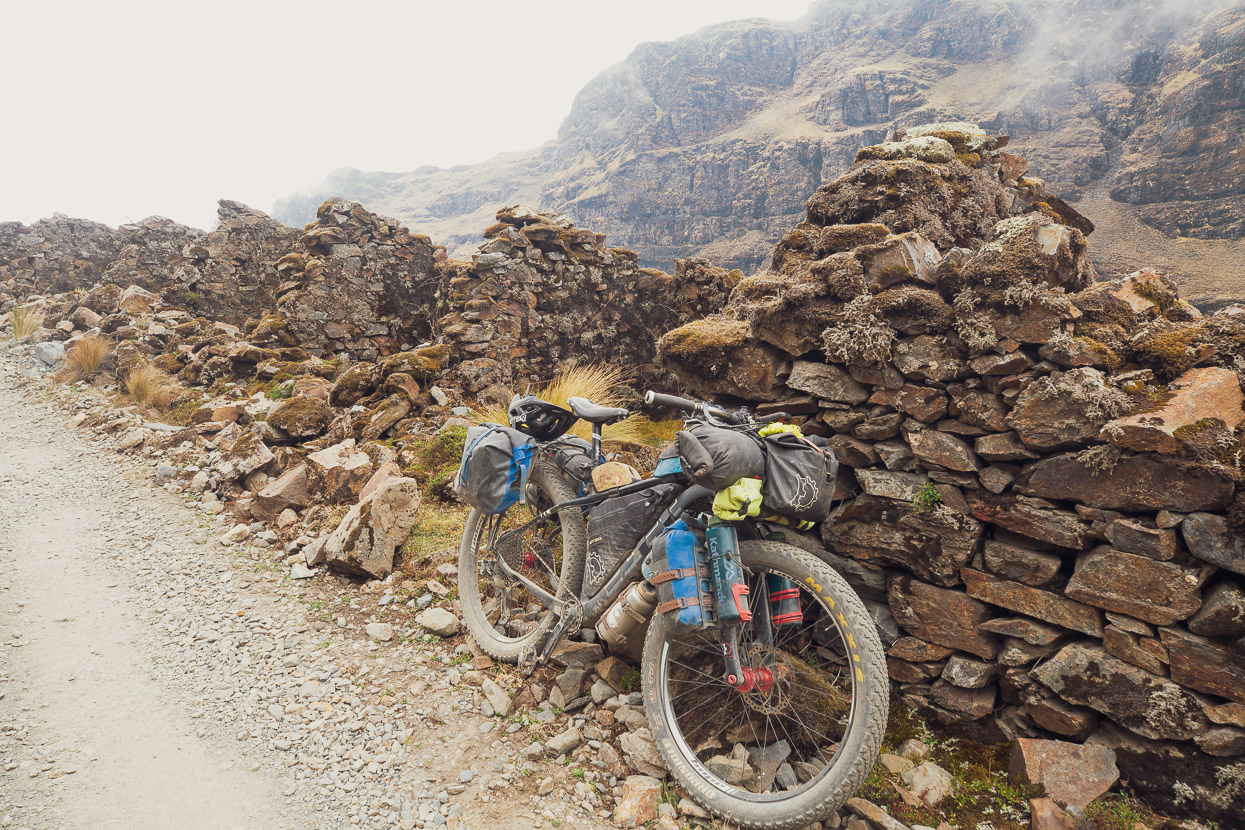
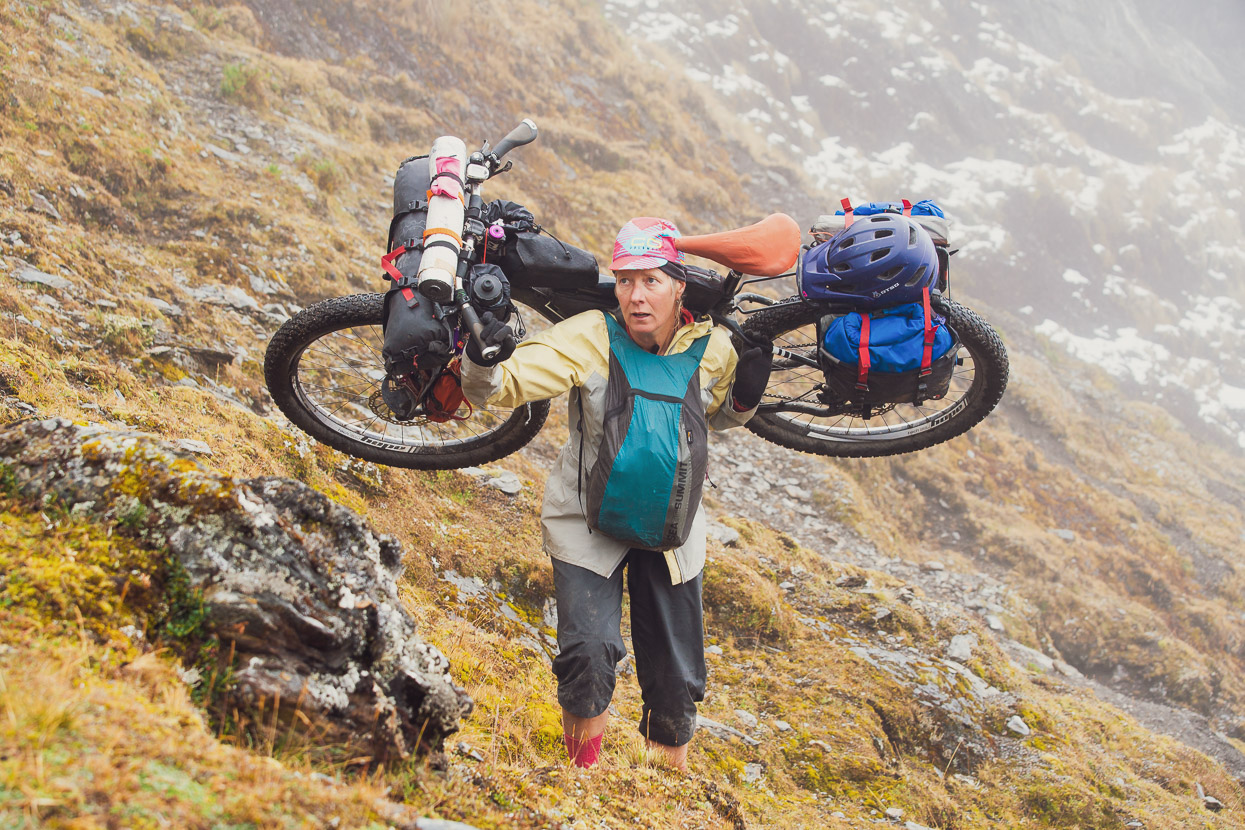
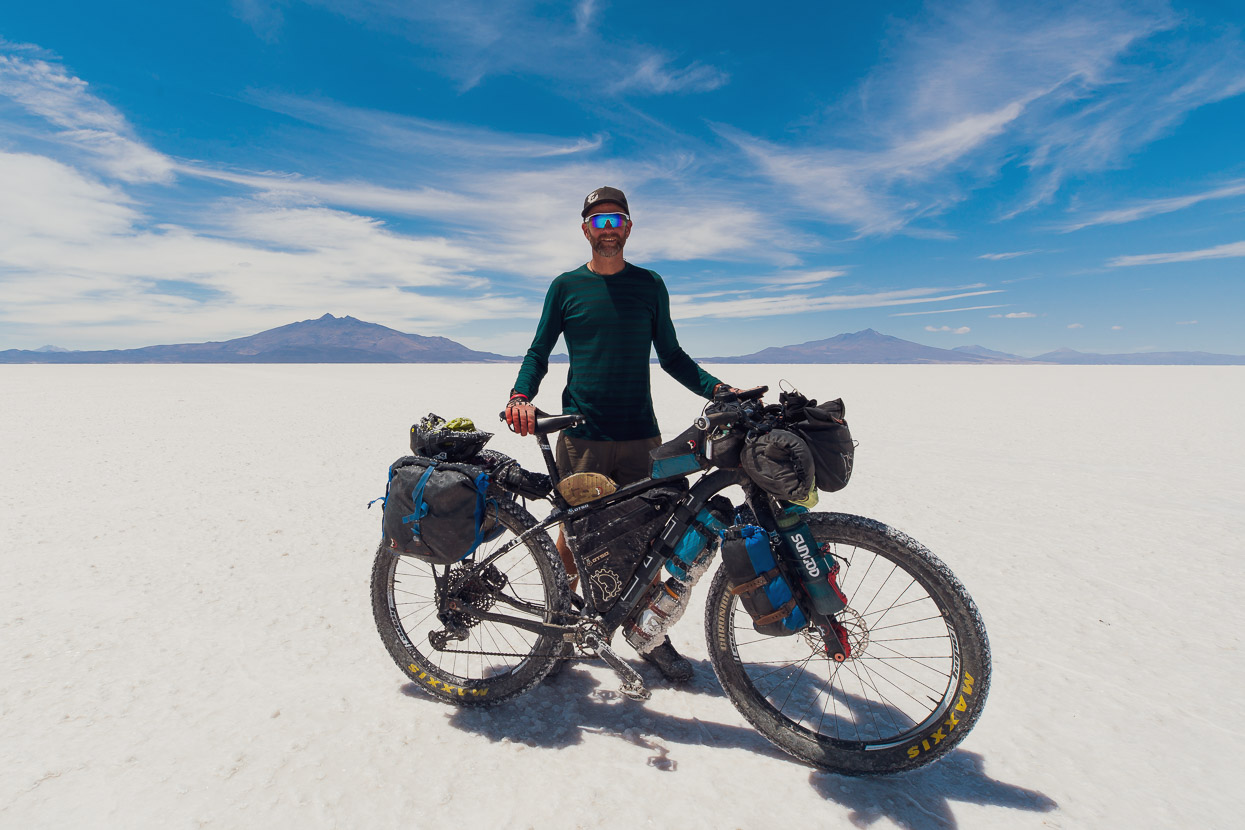
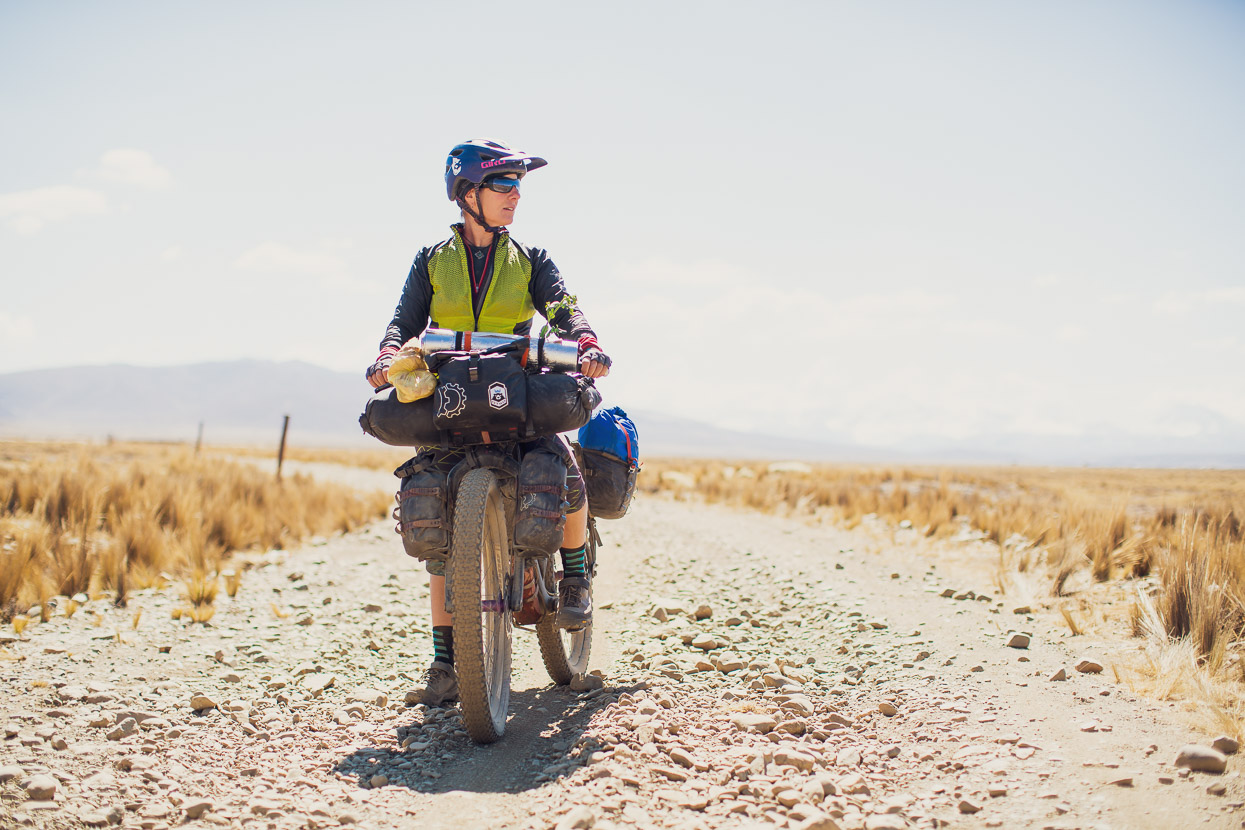
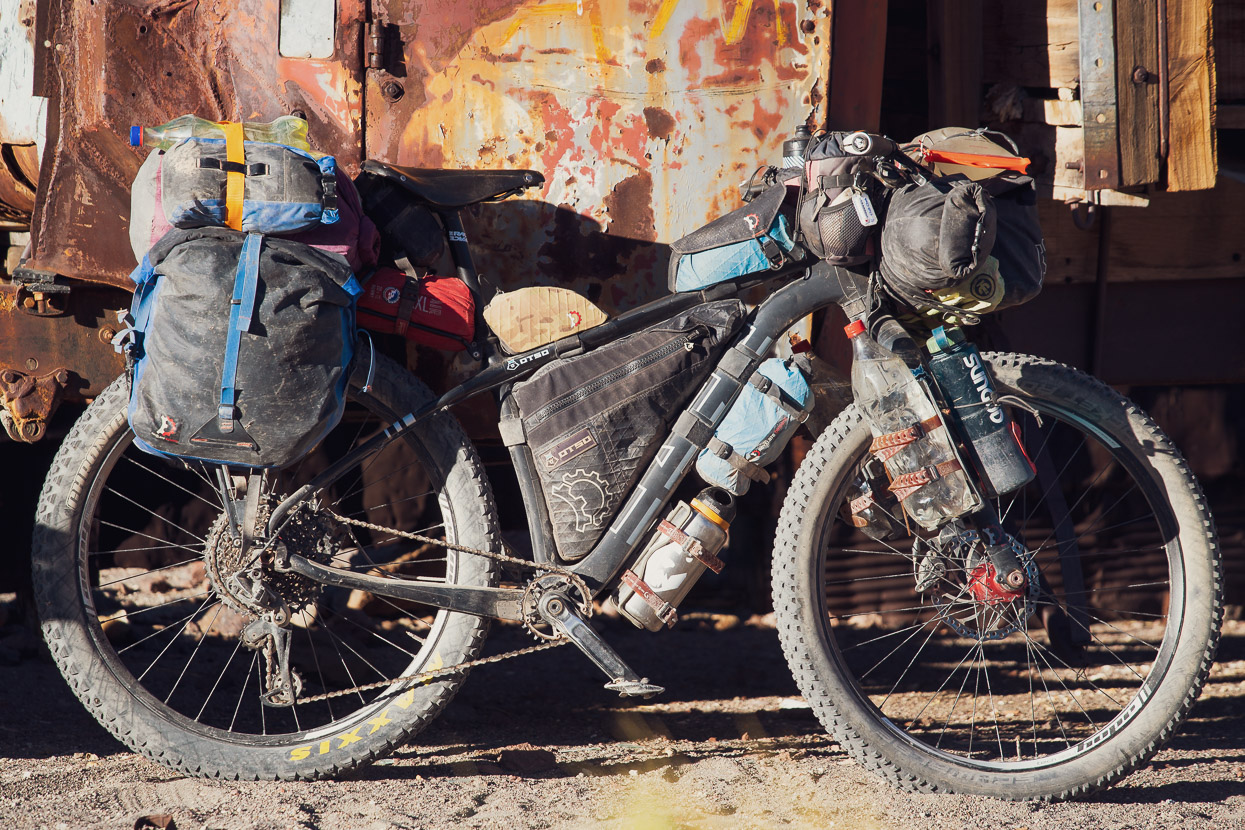

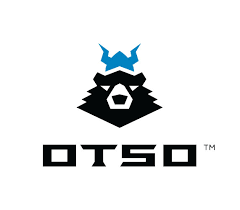


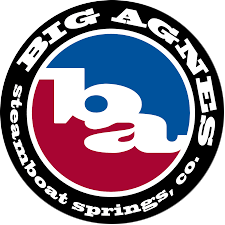





Hi Guys
Thanks for the update on the gear list. I especially appreciated the information on the Big Agnes Copper Spur HV UL2. I had wondered whether the shorter poles for the “bike packer” version of Big Agnes Copper Spur HV UL2 would effect the tents performance in high winds. Your feed back confirms for me that wind resistance is still very good. I presume the water resistance is very good?? Did you have any issues?
Thanks Pete
Hi Pete, no the shortstik poles make no difference at all to the wind stability of the tent, but we love that they are easier to pack! It is a helpful difference and not just a gimmick. Wind resistance was good enough for Ruta de los Seis Miles, which is a staunch test for any tent, and definitely a bit better than the MSR Hubba Hubba, however finding any shelter you can to break the wind is a good idea with this tent. It’s not as strong as a 4-season tent. The fabric weights are all comparable to the Hubba Hubba (if that is any comparison for you) and water resistance is very good (as good as any new high-quality three season tent). The drip line from the fly does sometimes fall inside the tent (depending on fabric tension) when the door is open, but this is more an annoyance than a deal breaker.
Hello,
Thank you for this site full of useful information.
I have a question about the total weight of your bikes excluding water and food.
About how much with the carbon framework? surly frame in crmo steel?
Did you win a lot compared to Surly?
Thank you
Seb
Hi Seb, we don’t actually know the exact weights of the complete bikes, but we do know you save close to 2kg comparing Voytek frame/Salsa Kingpin fork, with the Surly Ogre (quite considerable). Some further weight savings are made with 1X, and obviously choice of wheels, cranks etc… We felt like we won a lot (eps when it comes to carrying it on your back). Better handling and stiffness for loaded climbing are bonuses for us too.
Thank you for your reply. I have one last question concerning your rear luggage rack. What is the brand ? I can’t see in the photos. You have added a tab, it seems to me, at the wheel axle.
Hi Seb, the racks are Axiom Fatliners: https://www.axiomgear.com/products/racks/streamliner-racks/fatliner/
cheers
Awesome website! Someone on the GDMBR Facebook group suggested looking at your spares/tools/etc list. My wife and I are Seniors and doing the GDMBR NOBO, this summer. I am obsessing about what to take to be self sufficient. I could not find the list! Probably here somewhere! Thank you for the incredible photos.
Thanks Glen, I’m glad you like the website and photos! If you look at the tabbed section: Mark’s Gear / Hana’s Gear / Shared Gear / Camera, you’ll find it there (under shared gear).
Hello Mark, I’ve read and re-read both of your gear lists, plus the shared list, but can’t seem to find how you charge your electronics (sorry if the info is hiding in plain site!). I see you carry rechargeable batteries, but how do you charge them in the first place? Solar panel, dyno-hub, in the small towns you visit? In November, 2023, I’m riding the Camino Del Puma Peru / Bolivia loop you detailed, solo. I have a dyno-hub and a panel but wondering if the panel is needed. I’ve completed several 400-600 mile solo trips in the deserts of Utah, so this is the next step up. Anyway, enjoyed the content and look forward to following in your bike tracks. Also, since I’m in the early stages of planning, is there another route in that area your recomend as even better? I have a month + to do pretty much route, so any advice would be appreciated!
Hi, we mostly rely on 20,000 mAh powerbanks these days (1x each). They are on the gear list under ‘tech’ in our personal gear lists.
Generally speaking we tend to stay in towns or villages frequently enough to charge everything back up if the powerbank can’t cover it.
We navigate with Garmin eTrex (2xAAs) which means we don’t put a huge amount of demand on our phones (just map reading & photos/video along with the usual browsing etc…).
There are enough towns/villages on Camino del Puma that you should not need a solar panel, as long as you are prepared to spend the night in them. Not everybody wants to do that of course.
We have used dyno-hubs in the past, but only find them reliable/useful in places less mountainous than Peru, where average speeds can be very slow.
Camino del Puma probably provides a more diverse taste of Peru than you get on the other classics there, but really Peru Divide, Cones and Canyons and Ruta de las Tres Cordilleras are all incredible experiences. CdP has the advantage of being a loop for convenience.